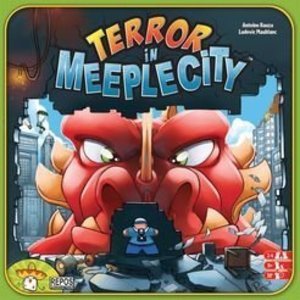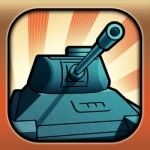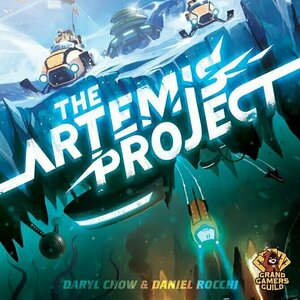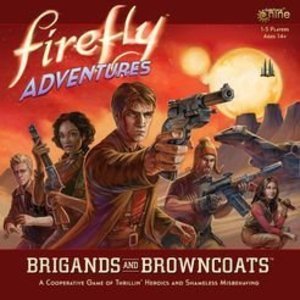Purple Phoenix Games (2266 KP) rated Buru in Tabletop Games
Feb 22, 2021
Buru (http://burugame.com/)is a mid-weight economic worker placement game with a large dose of bidding thrown in for fun. In it players are visitors to the island sent to compete to become the governor of Buru by hiring indigenous peoples to assist with tasks, by providing fish for the peoples, pleasing the island’s elders, and by paying homages to the spirits of the land. The emissary who can utilize all their resources efficiently and impactfully will be deemed governor of Buru and winner of the game.
DISCLAIMER: We were provided a prototype copy of this game for the purposes of this review. These are preview copy components, and I do not know for sure if the final components will be any different from these shown. Also, it is not my intention to detail every rule in the game, as there are just too many. You are invited to download the rulebook, back the game through the Kickstarter campaign, or through any retailers stocking it after fulfillment. -T
To setup, follow the instructions in the rulebook. There are just too many steps to detail here and the rulebook is fantastic. Once setup, the play area should look similar to the photo below.
The game of Buru lasts five rounds, and each round consists of five phases of the day: Dawn, Morning, Noon, Afternoon, and Dusk. At the end of the fifth round the game is over and players will tally points to arrive at the winner.
During the Dawn phase players will flip over the top two Decrees tokens from the middle of the main circular board. These Decrees will be placed in certain areas and are worth bonus points or other advantages for the round. Also during this phase the Forest cards will be reset from the previous round. Once complete play moves to the Morning phase.
In the Morning players will be sending out their numbered Explorer tokens (from 1-5) onto the various board areas in turn starting with the current Emissary (first player). Each player will place one of their Explorer tokens at a time until each player has only one Explorer token left. Players may place multiple Explorers in a location to increase their bid for majority, but these Explorer tokens are placed face-up (literally with the face showing and the number on the board not showing) so that their values are hidden. Once Explorers are placed, play moves to the Noon phase.
At Noon the people must fish for food and have lunch. The leftover Explorer token that was not used in the Morning is then revealed and its value is converted to fish. Fish are needed to recruit islanders and are converted into other resources. Fish are tracked on the individual player boards. After a hearty lunch play continues into the Afternoon.
The Afternoon is where much of the action in Buru takes place. During this phase the Explorer tokens that were placed in the Morning are revealed and players take actions in each area by order of majority in each area. First the highest-bidding player will claim their chosen action space, then the next highest bidder, and so on. The Forest is resolved first. Players reveal the Explorer tokens in the Forest and whichever player has majority in this area is able to place their tokens a claim space on the board and will receive a Forest card of their choice. Forest cards are typically resources immediately earned by the player. Resources include Clay, Palm Leaves, and Ebony. The player with majority also earns the favor of Gunung (green spirit) and takes its giant statueeple.
Next, the Shore is resolved in the same manner. The Shore is where players may use their supplies of fish to recruit islanders to their taskforces and carry out tasks. The majority leader in this area chooses a space to place their Explorer tokens and resolves the action. This could include purchasing islander cards and refreshing the offer of islander cards in whichever order the player chooses. The player with the majority also earns the favor of Banyu (blue spirit) and takes its giant statueeple.
The Village is the area where islanders are able to complete tasks. The majority leader in this area chooses a space and takes the actions. These actions include activating islanders for the actions printed on the bottom of their cards and possibly even earning more fish. The player with the majority also earns the favor of Manuk (orange spirit) and takes its giant statueeple.
Finally, The Sacred Lake is resolved in the same manner. Here players are able to pay tributes to the spirits in order to earn bonuses from them. The majority leader in this area chooses a space to place their Explorer tokens, earns an immediate Esteem (VP tracked along the outer edge of the board), and takes the action of the space claimed. These spaces offer opportunities to pay tribute to one or more of the spirits as well as earning an Elder card, which provides conditions for earning bonus points at the end of the game. When a spirit is tributed they offer bonus Esteem cards and other benefits to be used. Once this area is completely resolved and players have all taken their turns play moves onto Dusk.
In Dusk players will reset the board for the next round of play. Players retrieve all their Explorer tokens from the board and untask their islanders that have completed tasks this day. After the fifth round the game is over and players tally their scores from their position on the Esteem track, any spirit Tribute cards earned, and Elder card point conditions met. The player with the most points will be crowned the winner!
Components. Okay, I have to give a giant shout-out to the team at Crafty Games. This is one of the highest-quality prototypes I have ever played in terms of component quality. When I opened the game box all components were separated into baggies and card cases and LABELED with the number of components, the titles, and even a picture of the components to be placed within. I don’t even organize my games to this level and I feel I am a tad OCD about my game organization. Kudos here. But also the components are all fine quality and the finished product promises to be just spectacular if this is what is received as a prototype.
I love the art and art style throughout this game. It is difficult to have theme shine through in a very Euro-style game, but I did feel the theme here. The art is very suggestive of island life, and Crafty Games even hired Cultural Consultants to assure all avenues are culturally appropriate. What a great call. I wish all publishers would be so thorough.
The gameplay is also quite stunning. The game just flows so naturally and everything makes complete sense. Of course you need to collect natural resources before recruiting islanders before asking said islanders to complete tasks before you pay respects to their spirits. I like the flow, and after a couple rounds I no longer needed the rulebook as a crutch.
I have very much enjoyed my plays of Buru for many reasons. The game is absolutely gorgeous. The art sings and truly adds to the gameplay. The rules are not light, but not over my head, and I appreciate that. The choices given to each player are crunchy without being too burdensome, and players of many skill levels will be able to find joy contemplating when and where to send their Explorers in each area. The game builds up to a big ending where many points are scored from places unknown to opponents and bulleting ahead from last place to first from exploiting bonus cards is so satisfying.
It is easy to understand why I love this game and would certainly recommend it to all gamers. If you have been looking for something a little heavier in your collection but don’t want to go TOO heavy, please do yourself a favor and consider backing Buru. Crafty Games has been working on some truly great games here the past couple years and I am excited to see where Buru ends up after another undoubtedly successful Kickstarter campaign. I will always be up for a game of Buru, and I hope to play it often as the years continue.
Purple Phoenix Games (2266 KP) rated The Artemis Project in Tabletop Games
Apr 6, 2021
The Artemis Project is a game of dice/worker placement in which players are trying to build and sustain a prosperous colony on Jupiter’s moon Europa. Played over 6 rounds, players will take turns rolling and placing dice across the regions of the board to collect resources, construct buildings, recruit and train colonists, and partake in expeditions to explore this vast ice-land. To begin, follow the setup instructions in the rulebook for the appropriate player count. Each player receives a player board, dice, and markers in their chosen color. Populate the board for the first round, select a starting player, and the game is ready to begin!
Disclaimer: I do not intend to rehash the entire rulebook in this review, as there are just too many details. For a more in-depth look at The Artemis Project, pick up a copy from your FLGS or directly from the publisher! -L
To start each round, all players will simultaneously roll all 5 of their dice. Once players are happy with their results, the round is ready to properly begin. Each round is broken into three phases: Placement, Resolution, and Upkeep. To begin the Placement phase, starting with the first player, players will take turns assigning one die at a time to the 7 regions of the board. These regions are: Basecamp, Vents, Quarry, Gantry, Doorstep, Academy, and Outfitters. (I will explain each region in more detail in the next section!) The value of the dice placed in any region is important, because it will dictate what you are allowed to do, or when you are allowed to resolve the action for that region – so choose your placements wisely.
Once every player has placed all 5 of their dice, the Resolution phase begins. During the Resolution phase, each of the regions of the board will be resolved in order, allowing players to perform their region-specific actions. Resolution starts with Basecamp. Placing dice at Basecamp allows players to partake in Expeditions in an effort to earn Expedition Badges (which translate to end-game VP), as well as extra rewards. Each Expedition has a difficulty level which must be equaled or surpassed by the total of all dice placed on that card. If the difficulty is surpassed, the Expedition is a success and rewards are doled out accordingly, but if the Expedition fails, no rewards are earned by anyone.
The next 2 regions, Vents and Quarry, allow players to collect Energy and Minerals, respectively, and are resolved in the same way. Players will collect a number of resources equal to their played die value. Pretty straight-forward! Moving on to the Gantry region, the value of dice placed on any building tiles are considered bids for buying/constructing that building. You can bid against opponents for building tiles, but each bid must increase the previous amount. When resolving the Gantry, the highest value die on a tile is the winner, and that player must pay their die-amount in Minerals to collect that tile. Buildings are added to your colony, and allow you to perform special actions once they are fully-staffed (all colonist slots on the tile are filled).
Next is the Doorstep – depending on the value of dice you placed there, you will be able to recruit 1-3 new colonists. Recruiting a colonist costs you 2 Energy per new addition, and any new colonists you recruit can be placed immediately into any of your buildings (if space is available), or into your Shelter where they will wait to be used. The Academy region allows you to exchange a colonist of your choice for one of a different type/occupation, again, depending on the value of the die used. And finally, the Outfitters region does not resolved during this phase, because it’s action is performed immediately upon dice placement. Any dice placed to the Outfitters gives Tool Kits (used to manipulate die values at the start of each round) to the player, based upon the die value.
The remaining element of the Resolution phase is the Even card. At the start of each round, an Event card is drawn, and will pertain to a certain region of the board. During the Resolution phase, when that region is reached, the Event card will be resolved – either penalizing players or benefitting them in some way. I have purposefully left out a few elements of the Resolution phase for you to discover on your own!
Once all regions have been resolved, the round moves to the Upkeep phase. During this phase, all players can choose to move 1 colonist to a building tile, or swap any 2 colonists between buildings. This is not required, but can only be performed once during this phase. Next, if any players have fully-staffed buildings (all colonist slots are filled), they may activate the listed ability. And finally, for any colonists left in your shelter and not in a building, you must pay 1 Energy for each to keep them warm! The game board is now refreshed for the next round, a new starting player is selected, and the new round is ready to begin. After the 6th and final round, VPs are tallied – earned through number of building tiles, Expedition Badges, sets of resources, and sets of colonists – and the player with the most VP is the winner!
I know that seems like a lot, but I promise that once you start the first round, everything is pretty intuitive and the game flows well. The turn sequence and phases are logical and easy to understand. The game board itself has lots of helpful icons that work as reminders throughout gameplay, and the rulebook has a nice and concise round overview on the last page as well, which is easy to refer back to at a moment’s notice. I’ll go ahead and touch on components here, since I kind of already started to do so. The components in this game are great! The game board and cards are all sturdy and have colorful and immersive artwork. The dual-layered player boards are high quality, the colonist meeples are cute and effective, the building tiles and cardboard chits are strong and can definitely hold up to many plays, and the dice are easy to roll and read. Definitely an A+ on components from me.
I have to admit that The Artemis Project surprised me. At its core, it is a worker placement game, and that in and of itself lends itself to a certain gameplay. You’re trying to complete your own agenda, being the first to snag those important placements that you need to accomplish those goals, while also blocking opponents from doing the same. The thing that makes The Artemis Project unique is that the ‘workers’ in this game are dice. And their value is what dictates the resolution of each region. Just because you place a die in a region first, does not necessarily mean that you will get to resolve first – depending on how your opponents play, they could block you entirely! The use of dice adds an extra layer of strategy to the gameplay that really elevates it beyond a simple worker placement mechanic. Another great thing about this game is that there is no one way to win – there are several strategies that you could play by in an effort to earn VPs. Maybe you are trying to complete as many Expeditions as possible, or want to construct as many buildings as possible. Either strategy can work, and all strategies can easily be adapted and altered during gameplay.
I am so happy that I came across this game on Kickstarter. The game is strategic, engaging, and just fun to play. I’m not necessarily a huge fan of worker placement games, but the approach to the mechanic taken by The Artemis Project really puts a unique twist on it that adds to the gameplay. This is one KickStarter that was definitely worth the investment. Check it out if you haven’t heard of it, or if you’re looking to elevate your worker placement games. Purple Phoenix Games gives it an enterprising 10 / 12.

Basketball Stats PRO
Sports and Utilities
App
***Basketball Stats PRO for iPad - Best courtside statistics application on the iPad*** *** Get the...

Chess-Studio
Games and Entertainment
App
Chess Studio is the first and only application for iPhone and iPad able to completely manage chess...
Purple Phoenix Games (2266 KP) rated MechaTop in Tabletop Games
Jul 2, 2020
Disclaimer: We were provided with a PnP version of this game for the purposes of this preview. Please excuse my lack of a color printer, and rest assured that the cards are colorful and eye-catching. The rulebook we have is not the finalized version, but rather an up-to-date draft detailing the overall rules and gameplay. Some changes will probably take place during the Kickstarter campaign, so the finalized game system might have some differences to this preview. For more details, check out the publisher’s website! -L
MechaTop is a tabletop wargame system in which players pilot large Mecha suits and battle their opponents. To begin a game, you must first decide which game mode you want to play. After selecting the game mode, players create their Mecha teams for battle. Each game mode has an associated cost score limit – the highest maximum cost you can spend on your team. For example, a Mecha suit might cost 300, and the cost score limit for the chosen mode is 600, leaving you with 300 to spend on upgrade cards for your suit. Once all players have chosen and upgraded their Mecha suits, those corresponding cards are placing in their play area. Everyone then selects a Pilot card to be assigned to their Mecha suit, and receives a set of Button tokens and a secret Twist card (kept secret until played at any time during the game). Decide which weapons to equip on your suit for the start of the game, roll a d6, and take turns placing your Mecha in the playing field in ascending numerical order of the die rolls. You are officially ready to start the game now!
Each round begins with the Instinct Phase, where players decide which 2 Button tokens they want to play this round. The Button actions are: Attack, Movement/Rotation, Change Weapon/Reload, and possibly Telekinesis. After the Buttons have been selected, they are placed face-down on the playing field next to their corresponding Mecha suit. Next is the Initiative Phase, in which all players roll a d6 and the player who rolled the highest gets to act first in the round. On your turn, you may choose to activate 1 Button token, activate both Button tokens, or declare No Action and pass your turn. Choosing to activate only 1 Button allows you to perform a simple action, but activating both at the same time in certain combinations allows you to perform a more powerful type of the corresponding action. Choosing to do No Action allows you to keep both Button tokens facedown. The benefit to leaving either 1 or both Button tokens facedown is that you can then use them as reactions during an opponent’s turn. Let’s say an opponent tries to Attack you – if you have your Movement Button still at your disposal, you can use it to attempt to dodge the hit and negate that damage. If you don’t use a Button in that situation, or don’t have one left face-down, all the damage goes straight through on your suit, thus bringing you closer to losing the game. Be warned – some actions are automatic, but some are resolved by dice rolls, so you better hope luck is on your side! After all players have had a turn in Initiative Order, a new round begins with another Instinct Phase. Play continues in this manner until the win condition of the selected game mode has been met, and the winner is deemed victorious!
First and foremost, I think one of the coolest things about the MechaTop system is that it can be played using ANY mecha models, action figures, or standees that you choose. In my childhood, Transformers made up a decent amount of our household, so it’s neat that I am able to bring those back out again after all these years. The nostalgia is great in that sense, and it makes the game more enjoyable. Also along those lines, the game will come with blank Mecha and Pilot cards for you to create your own – the rulebook has a section dedicated to stat card creation. It’s a neat element that lets you add a personal twist to your game, and lets you sit in the pilot’s seat (see what I did there?) to make the game truly your own! In the team creation step, players also have the opportunity to buy Upgrades for their suits, and that gives you additional control over your game. You can create so many different combinations of Upgrades that keep each game unique and entertaining.
The overall game flow is pretty nice. The rounds are logical, and the Button tokens add a unique element of strategy that takes this game to the next level for me. Do you forego doing a special action this turn and save a Button token in case an opponent tries to attack you? Or are you willing to risk damage to your Mecha suit in order to execute the exact plan that you want? The Button tokens take MechaTop beyond a simple attack-and-defend wargame and incorporates strategy to help balance out the randomness of Initiative rolls. The Twist cards are a nice touch as well, because if played at the right time, they could literally turn the battle around for you! No matter how good your strategy is, however, all offensive/defensive actions are dictated by dice rolls. So there’s a bit of a luck element embedded in this game as well. You have to be able to adapt your strategy on the fly depending on how your die results are turning out!
There is a bit of a learning curve to this game that can make it seem daunting at first. Different actions require a different number of dice to roll, and knowing what results counts as a success or failure is not always easy to remember. Incorporating a Player Reference Sheet would eliminate some of the confusion, but it does get easier to remember the more you play the game. Probably the biggest drawback of the system for me is that there is no set game board or movement system. The rulebook details movement speeds and weapon ranges based on different scales of models you might use, but that honestly just went right over my head. Providing a set of bases for models, as well as a hex-grid board would take out that guess-work for players and make it easier to visualize movement and range. And that would help keep the game flowing smoothly because players would not have to spend time measuring distances across the play area.
Let’s talk components. As I mentioned earlier, we only have a PnP copy of MechaTop, so admittedly our components are not the best. That being said, the finalized game should be coming with nice colorful cards, sturdy cardboard tokens, and good quality dice. Don’t let my drab version keep you from checking out the game on BGG or its own website!
All in all, MechaTop is a wargame system that I can see myself playing again. The gameplay itself is straight-forward and simple to grasp, but the strategic elements incorporated with Button tokens, Twist cards, and Upgrades ensure that you will never play the same game twice. If you’re looking to get into wargame systems, or are just looking for a unique wargame setting, definitely check out the MechaTop Kickstarter when it goes live later this month!
Purple Phoenix Games (2266 KP) rated Firefly Adventures: Brigands and Browncoats in Tabletop Games
Sep 1, 2021
Firefly Adventures: Brigands and Browncoats (from here just Firefly) is a miniatures skirmish game that can be played as a one-off game experience or as a campaign style story game. In it players will either control one or more Crew (the heroes of the show) or all of the Goons (the bad guys). For the solo experience I will be detailing here the solo player will control all characters on both sides. The Crew will be attempting to pull off The Rescue Job by rescuing an injured comrade hostage stashed in one of the 10 buildings on the board. After the hostage has been rescued all Crew and hostage must make it to the landing pad area before time for the Job runs out.
To setup, follow the instructions on the included Job pamphlet (there are four included in the box). The beginning of the Job will look similar to the photo below, though other components outside the board setup may be in whatever location fits the player best. After Equipment cards have been revealed and shopping completed, the game may begin in earnest, and best be quick – you only have 50 Moments to complete the Job!
Firefly is a turn-based minis game, but turns will probably never be in the same order. Each action taken by a character costs Moments in time, tracked by the brown Moments tracker around the board. Each character, be they Crew or Goons, will have their own Time Marker to show where in the 50 Moments the character currently resides. The character whose Time Marker is furthest in the rear of the pack will take their turn next. On a turn characters will have several choices of actions to take: Move, Complete a Test, Heal, Assist, or even Brawl and Shoot!
This Job focuses on gathering Intel from a terminal in one of the buildings or by chatting up nearby Cowboys. These Intel chips may be turned in for information to help narrow down exactly in which building the hostage is being held. Along the way, however, certain events may cause the Crew to have to “act heroic,” which means swapping out their gray “casual” mini for their green “heroic” mini in order to complete the event. Funny thing though, once a Crew member acts heroic, if ending their turn within line of sight of a Goon, that Goon becomes Alerted and joins the Timeline with their own mini and Time Marker. The Goons will now be trying to take out the beloved Crew member! As in the photo below, poor Mal is being surrounded by Goons with Zoe and Jayne nearby to help.
When all is said and done, Crew and Goons will be taking actions and spending Moments to do so. Should the Crew get to the landing pad with the hostage in tow the Crew wins! However, if time runs out on the Job (as it did with me twice) then the Job has failed. In either case the Crew may receive Rewards in various amounts of credits or Intel or other rewards that they may carry with to the next Job if playing a Story (several Jobs in succession).
Components. I am a HUGE fan of the components in this box. Not only are the minis great, the tokens chunky, and the artwork very good, but each 3D building is pre-assembled right out of the box. They nest very tightly and neatly within the box (whose bottom is also a very large building), but you will need to provide a bunch of baggies or other storage means because all the small components will be dumped into these buildings otherwise. I love all the components in this game, and they are all wonderful to handle… except one – the Time Markers. These are the tokens that represent the characters on the Moments tracker. As characters move along the tracker their Time Markers will be placed on a blank spot, or more often than not, on top of a stack of other Markers. No problem usually, unless your big man-hands tend not to be dextrous enough to grab the top Marker cleanly off the stack and it causes a giant mess of Time Markers on the board. I mean, not that it happened to me several times, of course…
In any case, Firefly is a marvelous scenario-based minis game that I have had nothing but great times playing – even solo! I honestly cannot imagine having more fun by adding more players, so this may be another “solo only” game for me. I will probably try it with my wife, maybe, or someone else once the COVID is gone. I love being able to figure out how best to maneuver each character in order to achieve the goals of the Job, but then something always causing me to have to act heroic and end my turn in LOS of a Goon, so now they are coming after me. I would not necessarily compare it to an action-programming game where you make plans only to have randomness obliterate them, but it certainly adds a giant amount of tactics to the game. In fact, during one play Mal alerted four Cowboys at once, and then the game was no longer a strategic stealthy experience but an all-out melee just to survive. I lost the Job, but only by a few Moments.
Ahh, this one is fabulous, and I am so happy that I have finally found that perfect-for-me Firefly game. If you are a fan of the Firefly mythos and are looking for a game that does it justice while having a ton of replayability, then please check out Firefly Adventures: Brigands and Browncoats. I am seriously also considering purchasing the expansions to add Book, Inara, Simon, and River. I mean, how could you NOT want to add River to your game?? I’ll be in my bunk.

Terror in Meeple City
Tabletop Game
In Terror in Meeple City (formerly known as Rampage), you arrive in Meeple City as a gigantic,...
Andy Meakin (5 KP) rated Jumanji: Welcome to the Jungle (2017) in Movies
Jul 11, 2018
Do you find yourself agreeing with any of that little rant? If you do, then I have a few things to say. First, accept that for thousands of years similar tales have been retold to new generations to keep the spirit of a story alive. Second, why not actually wait to see what the new film has to offer before casting judgement as Jumanji: Welcome to the Jungle actually serves well as a sequel to the first film, whilst doing something new with the idea.
Starting in the mid-90s, and the board game is unearthed on a beach. Given to a teenage kid by his father, the kid isn’t impressed as ‘nobody plays board games these days’, and he gets back to playing on his console. Overnight, reacting to the changes in gaming culture the box works some magic, and the next day the game has morphed to a video game format, to entice a new generation. Jump forward to present day and a group of unlikely teenagers are cast together in detention when they happen upon the abandoned game console. Taking a break from their junk-room sorting, they fire up the game and find themselves pulled into the game -world, each taking on the avatar of the character template they chose on load up. Presented with a quest in true video-game fashion, they set off to find a way to escape, whilst learning something about themselves in the process.
By transitioning to a video-game setting, the story allows for a great deal of fun to be had poking at the contrivances and conventions of the format, especially for games of the era in which the game was inspired. The characters all have strengths and weaknesses, the spawning of lives by dropping from the sky is so reminiscent of many a side-scrolling platform shooter of yesteryear. Even the behaviour of the NPC – I mean support cast – is perfectly drawn upon the mannerisms that game characters act, being there to spout random exposition to move you on your quest. As for the quests – yep, they are pointlessly complicated, filled with traps and red herrings.
But such pokes at video game culture would be wasted if the casting was wrong, but in the four main stars they have cast the perfect personae for each archetype. The heroic, strong and smouldering hero, who is being played by a soft heated geek – The Rock of course. You want a ‘Lara Croft’ style action heroine, albeit played by a socially awkward teen girl – enter Karen Gillan. Weak sidekick who is only there to carry equipment, but being played by a high school jock who thinks he can do anything – Kevin Hart is your man. Round that off with a studious professor type, being played by a female – that kind of comic role works well for Jack Black. Each of the stars cast has a lot of fun playing with there archetypes, and the film does them all justice to allow them to each have their moments to shine. Gillan, in particular, does a great job at looking entirely awkward yet confident at the same time, and her nerdy seduction scene showcases a comic timing ability equal to her action talents showcased in the GotG films.
The action is thrilling, the humour well placed, and the direction solid enough to bring this video game movie to life. In fact, this is one of the best video game movies to date, even though it isn’t even adapted from a real video game. A few nods to the original Jumanji are present, but without awkwardly placed. The end result is a fun family adventure with some great action set pieces and a wry humour, much like the original was. Don’t let nostalgia for the original put you off exploring the world of Jumanji once more.

Blood & Honor
Games and Entertainment
App
Blood & Honor is an easy to pick up, hard to let go, world domination game. It mixes the classic...

MONOPOLY for iPad
Games and Entertainment
App
**YOU VOTED & THE CAT’S OUT OF THE BAG** Thanks to the votes from YOU and thousands of loyal...




